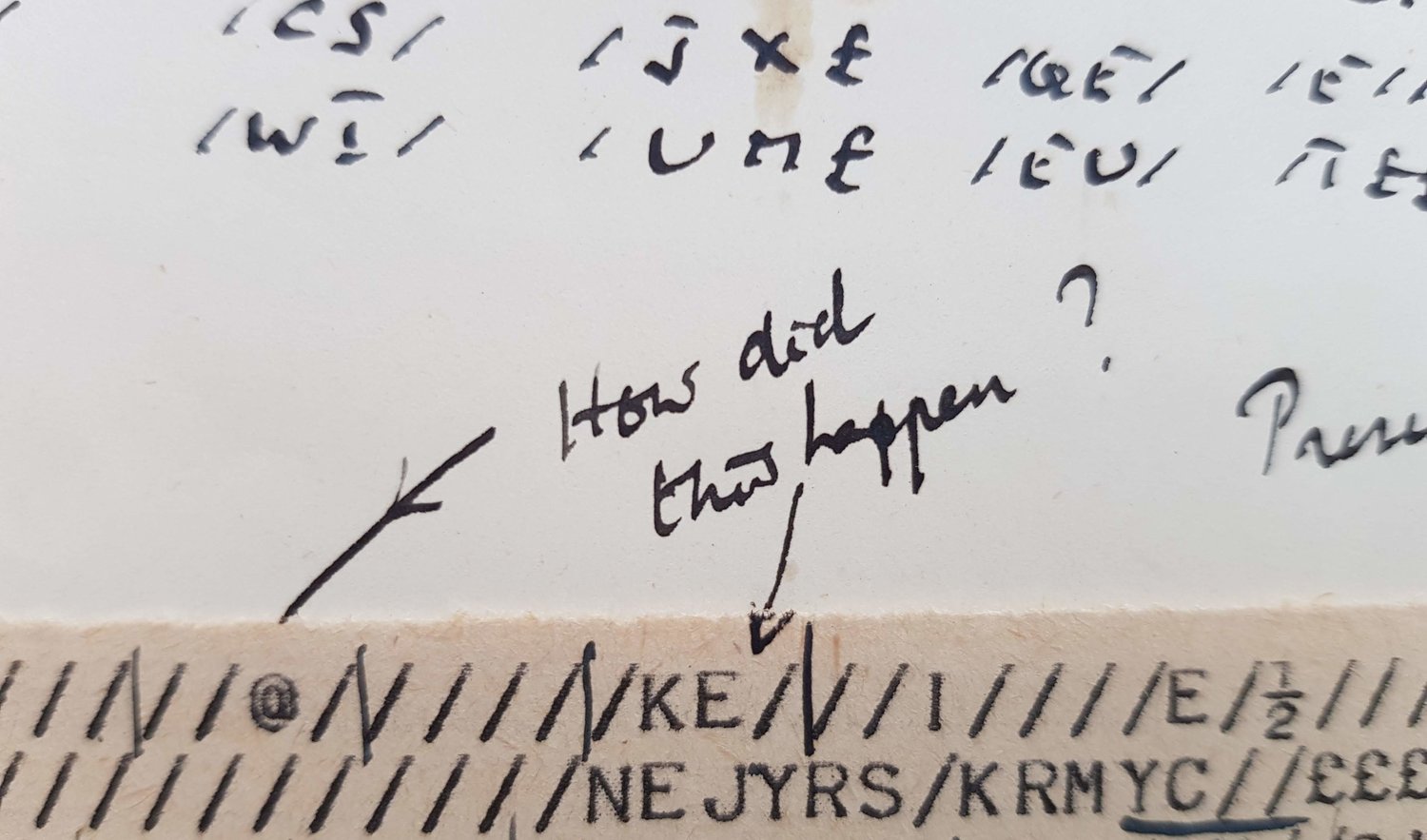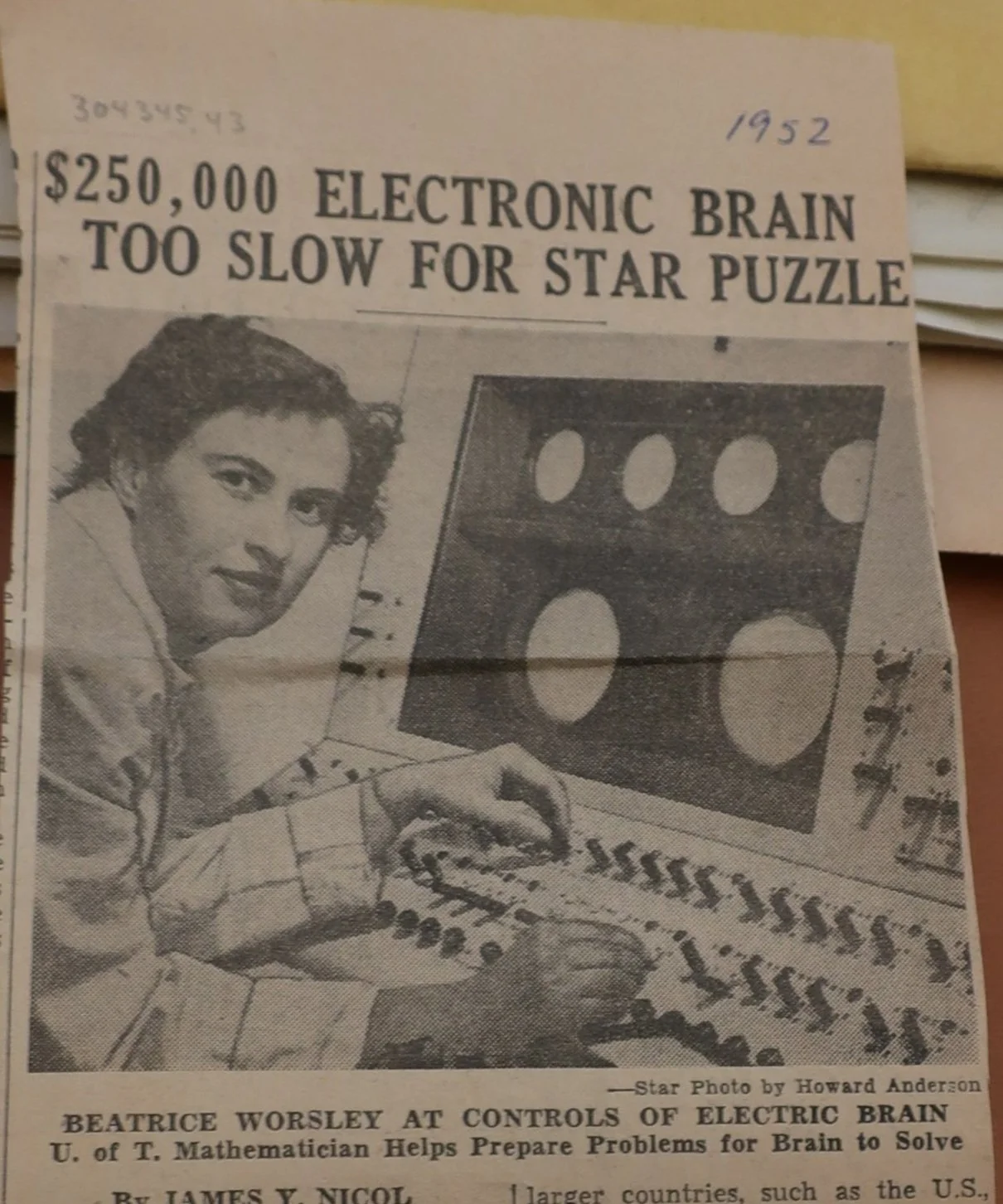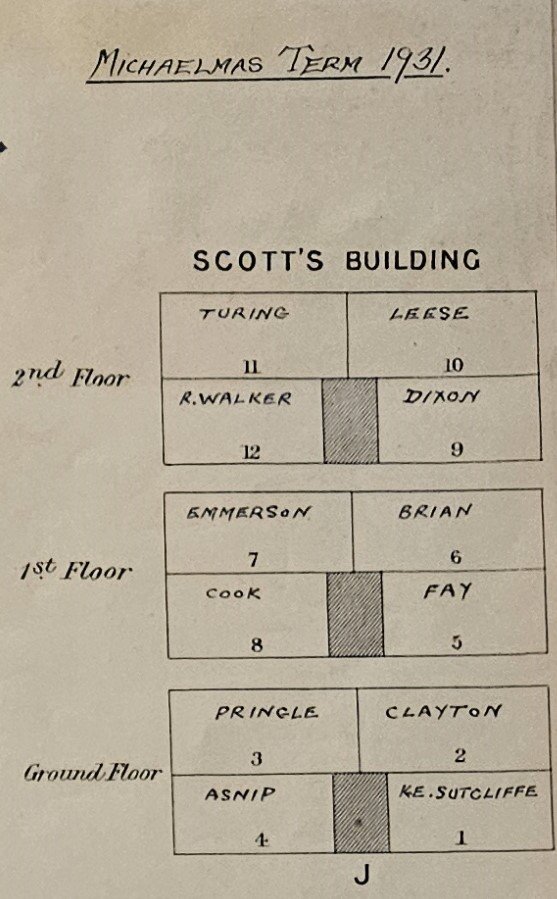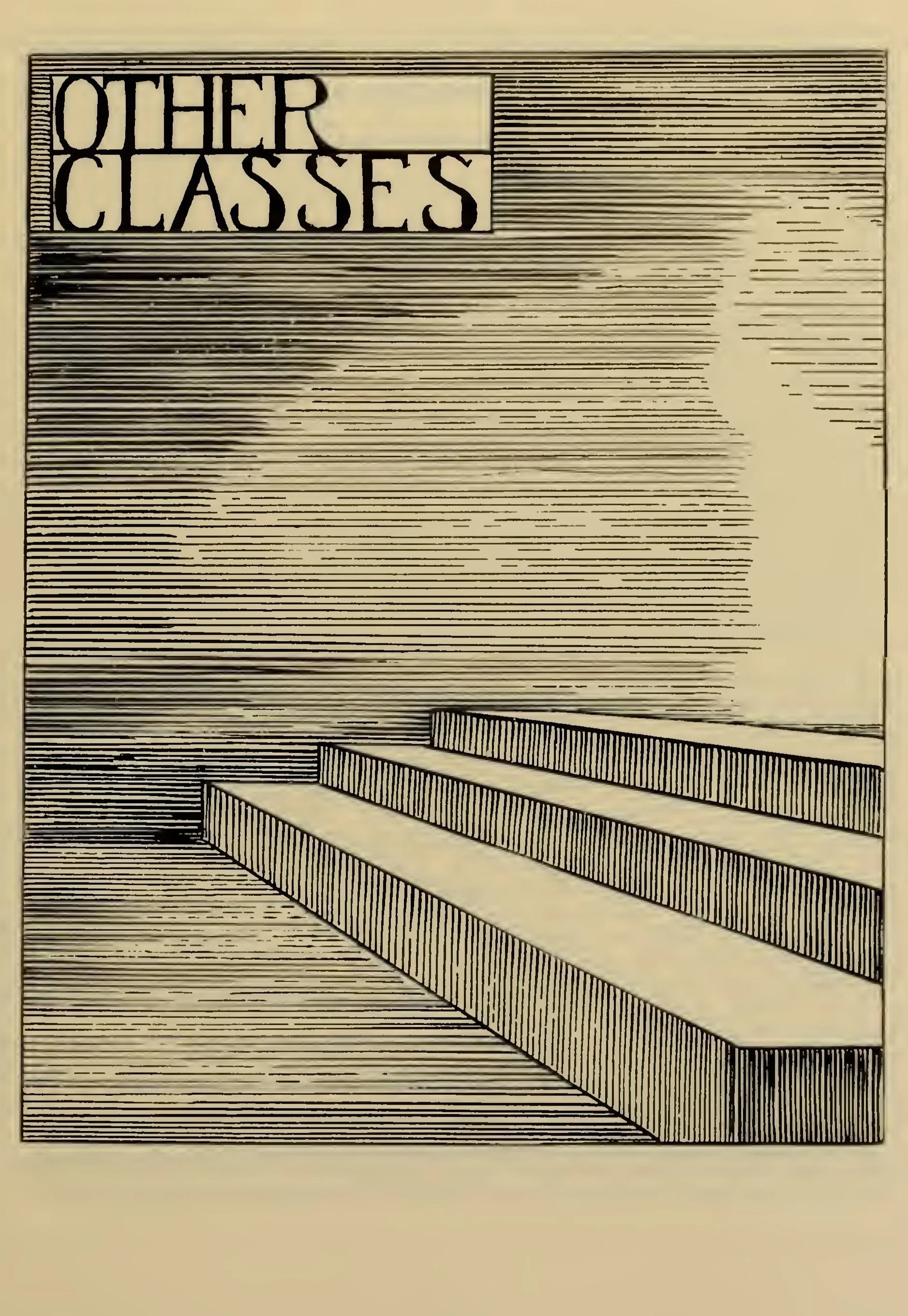Bernardo Gonçalves has a nice new paper out on the Turing Test, partly making use of a couple of letters to Beatrice Worsley noticed by Mark Priestley in the Smithsonian archive. I don’t have much to add to Bernardo’s paper, but Mark’s generosity in sharing this source does help me illustrate that Turing had a major blind-spot: he didn’t generally take women seriously as mathematicians. Worsley is notable as the only female mathematical thinker for whom there’s any evidence of any intellectual traffic with Turing. (According to Hollywood, Joan Clarke achieved the same respect, but there’s little evidence for that beyond the desire to see Turing as a sympathetic figure.) In this of course he was hardly alone in this among his professional male peers: see this contemporary US report about how his mentor Max Newman was a superb manager at Bletchley Park save for the fact he didn’t make good use of female talent.
In 1950, Turing was still committed to the idea of using the new electronic computers to do thinking with in mathematical logic. That - rather than building a fast calculator - was why Max Newman had succumbed to Patrick Blackett’s enticement move to coal-black Manchester, over the objections of his wife Lyn, and why Max had in turn recruited Turing there in 1948. But Newman never did any active research on the computer and Turing was left, intellectually, entirely on his own. As the engineers took control, the project of doing research in mathematical logic on the new electronic computers was running into the ground while mathematical resources went, instead, into numerical calculations.
There were two young, enthusiastic and First-class mathematically trained women Turing could have used to build a research group around. Audrey Bates and Cicely Popplewell shared Turing’s office, and indeed Audrey Bates’s first job was to implement a version of ‘lambda-calculus’ - the tool of choice of mathematical logicians on the Manchester computer. But as soon as her MSc was finished, Bates defined herself as a programmer, not a mathematician. It can hardly have helped her lack of engagement with Turing’s intellectual program that Turing barely thought she and Popplewell had a right to exist, as one of the two once told Andrew Hodges.
So how did Worsley establish this right to exist? Perhaps she came to Manchester because she was interested in Turing. Worsley was registered for a PhD in Cambridge from 1949, working on the EDSAC electronic computer there that Turing largely avoided engaging with. Whilst in Cambridge she took and - notably - kept some intriguing notes on a talk she later labelled as a ‘physiology colloquium - Univ of Cambridge 1949’ that discussed a number of issues that were occupying Turing at the time. There are references to information theory, and to the Rashevsky house journal from Chicago, the Bulletin of Mathematical Biophysics, and one diagram headed ‘flow diagram for a thinking mechanism’. (The five relevant sheets are displayed in the gallery nearby: these papers are in the National Museum of American History Worsley papers Box 1 Folder 1).
It’s unclear who the speaker was; I’d say not Turing, but the notes have a Ratio-y Club feel. Perhaps Woodger or McCulloch? If Worsley’s later annotation is correct then the only recorded candidate for the meeting is the Society for Experimental Biology’s ‘Physiological Mechanisms in Animal Behaviour’ which was held in Cambridge in July 1949. But the proceedings of that, though it has a contents list with star names such as Tinbergen, Lorenz and Lashley, don’t contain any paper that the notes are a recognisable version of. There is a mini-clue [I am unusually sensitive to these at the moment, being more or less completely unable to get any grip on John Finnemore’s new thing] in that JH Woodger is thanked reading one of the articles by WH Thorpe.
[Note added 8 May 2025: thanks to a note from Mark Priestley I took a look at the Wilkes archive in Cambridge. That contains lists of the EDSAC projects of the early 1950s, and the only relevant one was Anthony’s Oettinger’s project on ’Learning programmes’, presumably the work published as Programming a digital computer to learn, Philosophical Magazine 1952 43 : 1243 – 1263 . According to Wikipedia, Oettinger, later in life, credited Turing - not - Wilkes as his intellectual aspiration. Turing kept Oettinger’s offprint, and it seems likely to me that Turing did indeed talk to him at the time; by contrast there seems to have been some reason Turing avoided Wilkes and the rest of the EDSAC community. So Oettinger seems a possible source of Worsley’s note and her connection to Turing.
Whilst in the archive I also saw this comment by Wilkes which is an interesting gloss on Women at the console. ]
…the reason for requiring automatic sequence operations is … to get, in effect, an operator who will work for 168 hours a week without tiring, and can be trusted to do as she is told without making mistakes. Maurice Wilkes’ 1947 justification to the Universit of Cambridge for building the EDSAC electronic computer: Cambridge University Library UA/COMP 1/2.
Anyway, back to Worsley. The fact that she chose to preserve these notes gives some hint that it may have been for reasons of intellectual interest in and perhaps from Turing, rather than commercial or academic reasons, that led her to work with the Manchester computer rather than the Cambridge one from 1950 onwards; by the end of 1950 she was living in Manchester. It was unlikely to have been a fleeing from Cambridge misogyny; the historiographic consensus is that Hartree, the professor in Cambridge, was much more sympathetic to female graduate students than supervisor in Manchester was.
The most substantial biographical article on Worsley (indeed it is the only one) says that
Worsley started writing her dissertation at Cambridge, but in 1951 for some unknown reason she returned to Canada with the text unfinished. She arranged to complete the work with the supervision of Byron A. Griffith, a professor of Mathematics at the University of Toronto and a member of the Computation Centre. Worsley wrapped up the writing quickly and was rehired as a staff mathematician at was rehired as a staff mathematician at the Centre in July 1951. Hartree approved the dissertation in Cambridge, and Worsley’s doctorate was awarded in 1952 after Hartree made a visit to Toronto. (Cambell, 2003)
A letter of December 1950 from Worsley to Turing, now in the University of Manchester (in the Special Collections TUR/Add 13 and 91), does indeed says that she intended to return to Canada because of medical advice to ‘take a prolonged change from academic work’. The same archive confirms that by 1952 she was working again, partly on the University of Toronto’s new computer. The correspondence with Turing restarted on practical career matters and applied mathematical issues, but also, notably, on Worsley’s ambition to find the simplest program which would ‘provide the functions necessary for the calculation of a computable number consistent with your theory’. This seems to have been intended to end up as a chapter in her Cambridge PhD thesis.
Beatrice Worsley in the Toronto Star, 1952, helping to 'prepare problems for Brain to Solve'. (The star puzzle was a newspaper circulation gimmick, not a cosmological model).
Quite why Worsley rather abruptly left first Cambridge and then the UK to finish her PhD in Canada, and how the University of Cambridge thought that an acceptable idea, is not explained in print anywhere. In fact Worsley’s inner life remains pretty opaque beyond an enquiring mathematical brain. As far as the world knew, she never had any romantic partners, and all we know about her family life is that she barely spoke to her sister-in-law. One of the few glimpses was noted in Scott Campbell’s 2003 biography: at Worsley’s death in 1971 she left her decent sized estate not to her living siblings but to the University of Cambridge she had left in a hurry twenty years earlier. (Worsley died of a heart attack at the age of 50 so this Will might have been made much earlier.) Moreover this was specifically to found a ‘Helge Lundgren’ studentship. In 2003 Campbell didn’t know who Lundgren was so by implication the sister-in-law either wasn’t telling or didn’t know, but it seems likely to me that this was in memory or honour to the Helge Lundgren who was a prominent Danish canal engineer. A romantic speculation might link that to the flight from Cambridge, but is very unlikely. The likeliest time for any personal connection with Lundgren was after the Cambridge years, as the the major application for the Toronto computer, Ferut, was simulation of the hydraulic behaviour of the St Lawrence Seaway, Beyond that, there’s not much.
Bernardo uses Turing’s letters to Worsley of 1951, now in Washington, to good effect in explaining Turing’s opinion of his Test, but to see an early reception of these ideas it is the letters in Manchester (which run through 1952) that show how Worsley responded with her own ideas:
In connection with your paper on computing machinery and intelligence I'm still trying to think of some property of the human mind which could not be duplicated by The Imitation Game. I feel intuitively that if there is one it must be in the direction of spontaneity. McCulloch and Pitts in an article in the Bulletin of Mathematical Physics postulate a brain mechanism in which the threshold of excitement of the neuron can be determined by the neuron itself.
It’s not a ground-breaking response but it is an engaged one, and as such rather unusual among mathematicians of the time.
Thanks to Jonathan Dawes for investigating the SSEB proceedings and identifying the 1949 meeting. For the Ratio Club, I have taken my view from Husbands and Hollands 2008 article. At more length I have only just read Andrew Pickering’s superb book, both readable and indigestible, The cybernetic brain: sketches of another future. The day this was first posted, Colin Williams, who I had a great drink with in the pub once in Oxford, has shared with me for the first time his completed PhD on British cybernetics, which claims to be ‘archivally rich and methodologically innovative’, and changing ‘our understanding of post-war British history so that’s something to look forward to reading properly. Naturally I have ctrl-F-ed to check that my Turing book was cited (it was, thanks), and as a consequence I discover I am thanked for my support, which I don’t recall giving. One more superficial response: I don’t think I’d agree with Colin’s claim that Pickering’s book was merely in the service of sociological intervention; it is packed with vivid and well sourced history.














